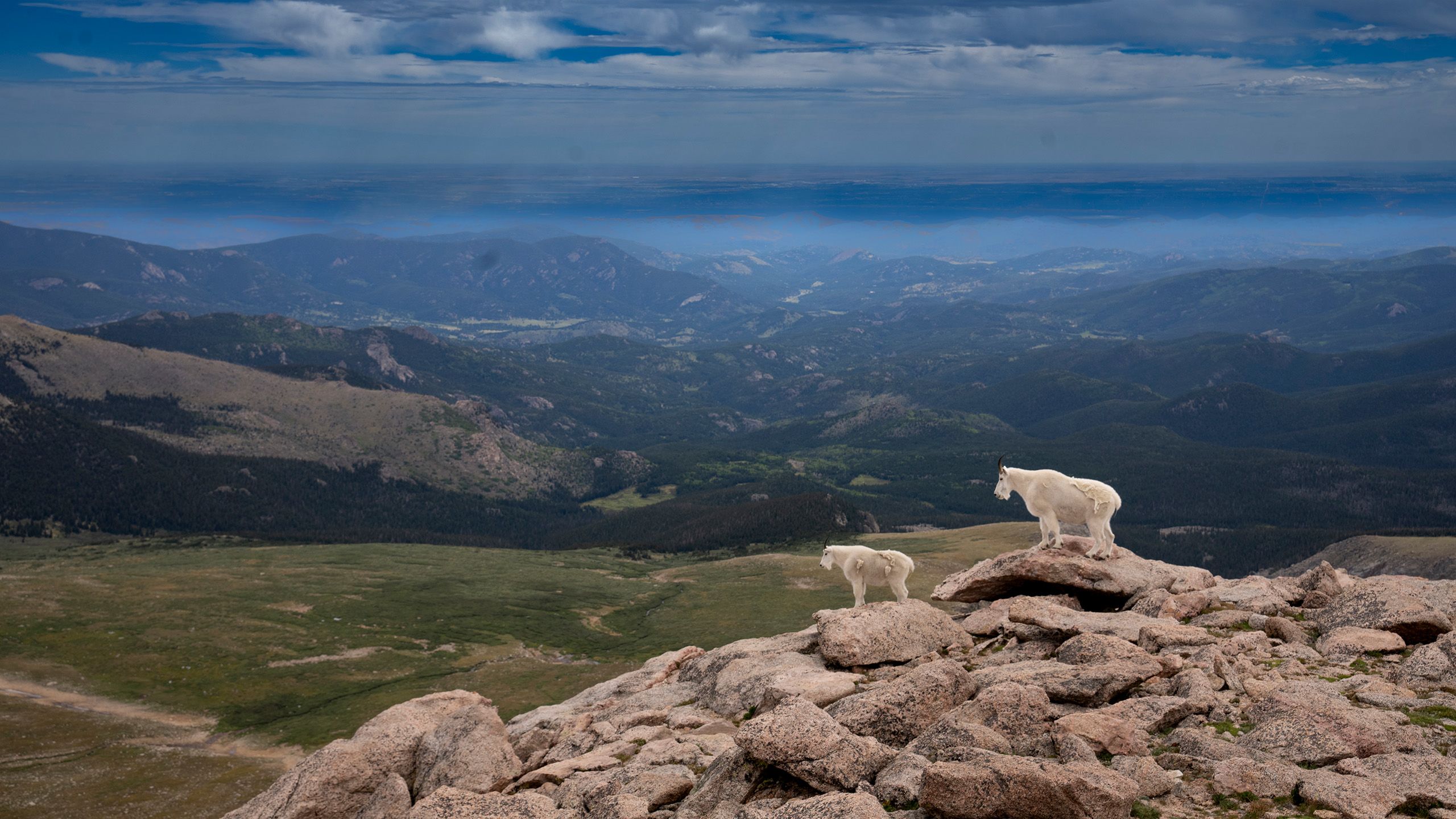Research at 14,000 Feet
The Velotta Lab seeks to understand how tiny mammals have genetically adapted to survive at Colorado’s highest altitudes.
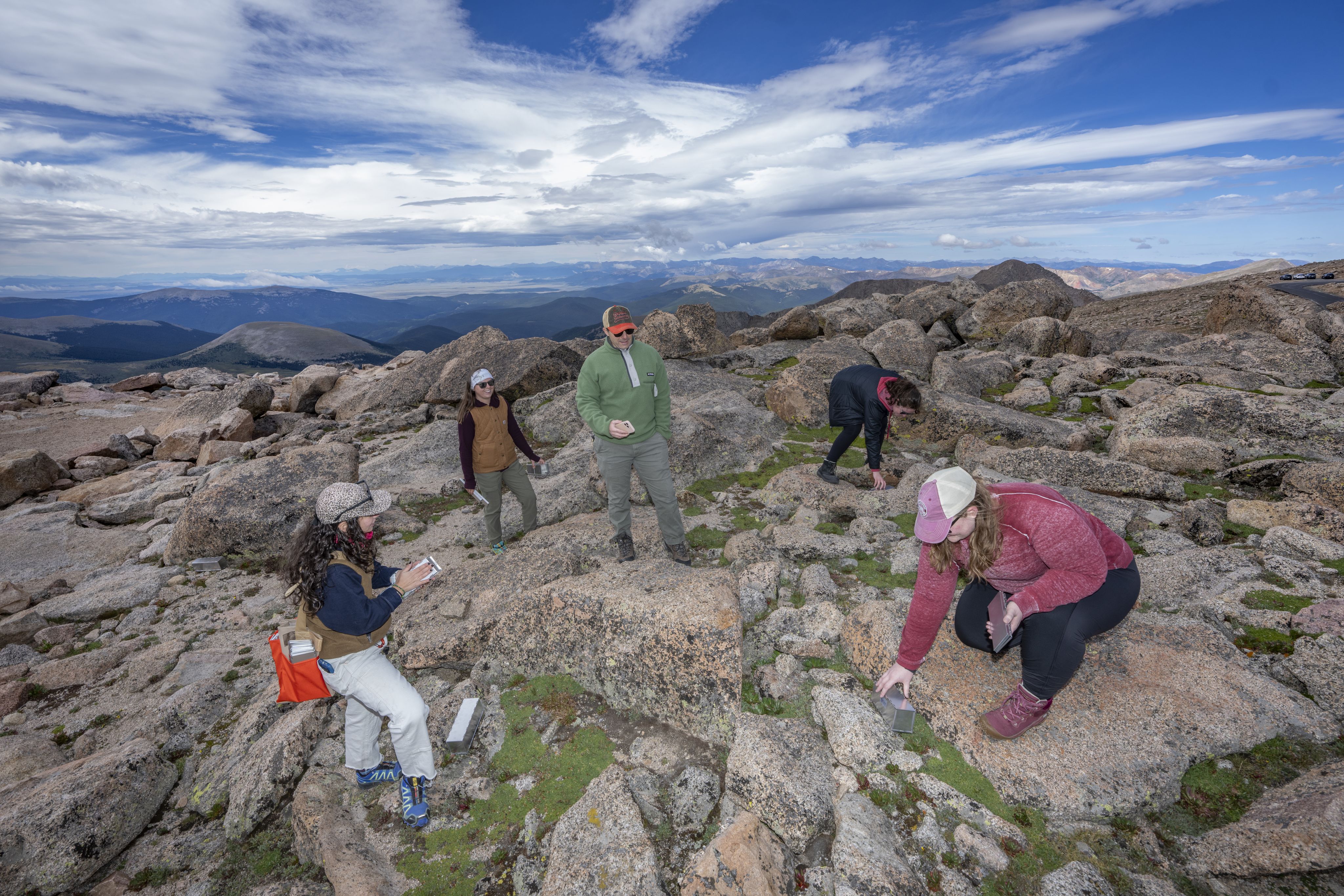
“Life finds a way,” Dr. Ian Malcolm famously said in the movie “Jurassic Park.” Actor Jeff Goldblum’s character may have been talking about dinosaurs, but his words ring true for biologists studying species in the modern world. From the bottom of the ocean to the hottest desert and coldest tundra, you’ll find evidence of life almost everywhere on Earth.
For University of Denver evolutionary biologist Jon Velotta and his team of dedicated student and postdoctoral researchers, the place they prefer to study is the summit of one of the highest peaks in Colorado: Mount Blue Sky. Reaching 14,268 feet, Mount Blue Sky’s looming peak can be seen from Denver, as far south as Castle Rock and as far north as Fort Collins.
Predators like mountain lions and black bears roam the windswept terrain, preying on bighorn sheep, mountain goats, marmots and pikas. Among the mammals lives the deer mouse, a seemingly inconsequential animal that can be seen scurrying among rocks and alpine tundra way above the tree line. Up so high, where the air is thin and predators are few, the mice eke out a living in an unforgiving atmosphere—a place where most among us struggle to breathe, let alone make a home.
While the deer mouse may be easy to miss amidst the more physically impressive and photogenic mountain goats that call Mount Blue Sky home, the Velotta Lab team are singularly captivated by this tiny mammal. Why? Deer mice possess the answer to a question that has interested researchers for years: How do these mice survive—and thrive—at the world’s highest altitudes?
Velotta’s study of deer mice began long before his tenure at DU. While he was a postdoctoral fellow at the University of Montana, Velotta began working with his advisor, Zac Cheviron, to study the adaptation of deer mice to high elevations in the Rockies. Cheviron’s own advisor had been doing the same work at the University of Nebraska-Lincoln for more than two decades. When a job opened up at DU in 2020, Velotta said it felt serendipitous.
“Since about 2015, I had been coming down here every year from Montana and studying these populations,” he explains.
Now, Velotta gets to continue the work of his advisor (and his advisor’s advisor) much closer to the environments they study.
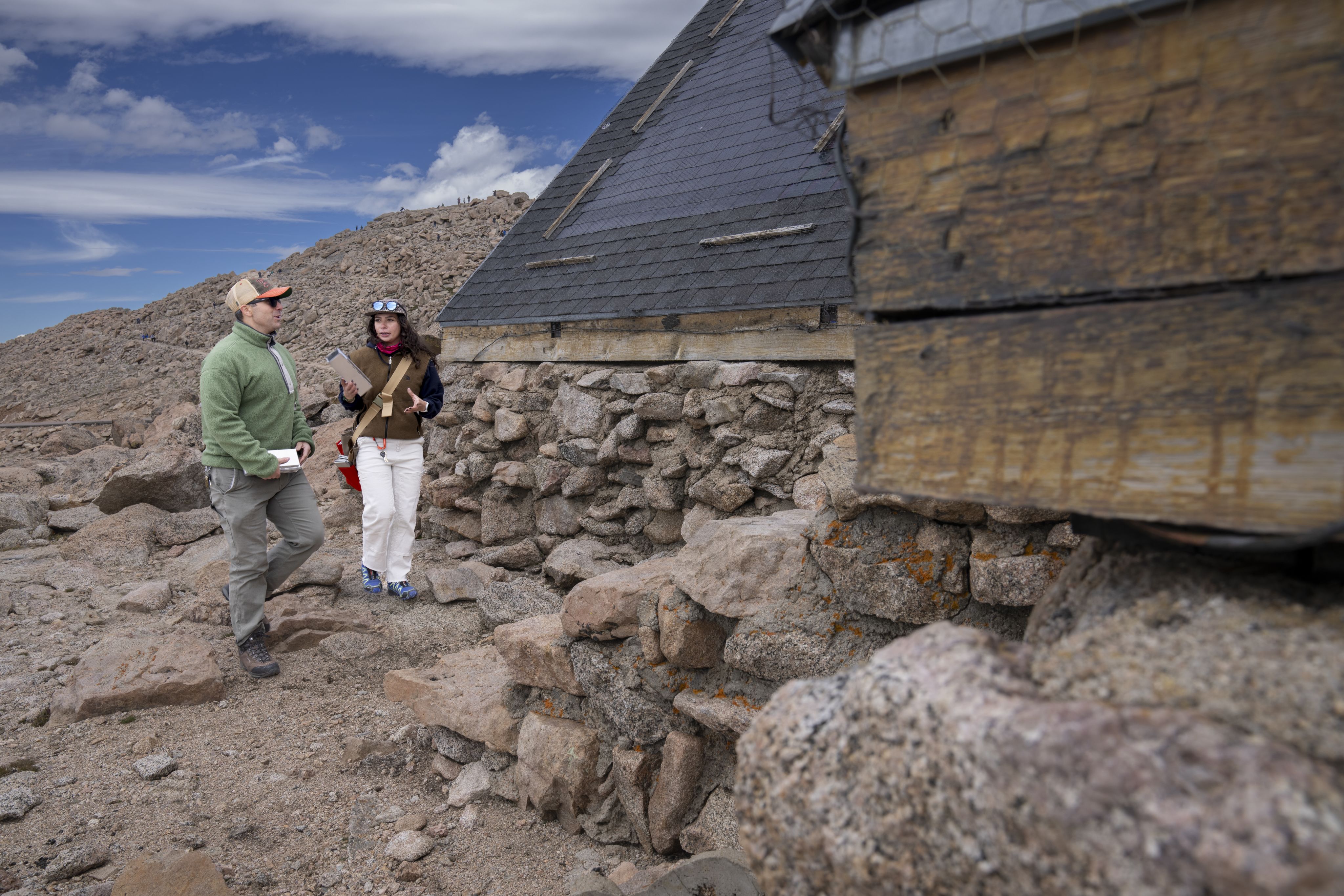
Predators like mountain lions and black bears roam the windswept terrain, preying on bighorn sheep, mountain goats, marmots and pikas. Among the mammals lives the deer mouse, a seemingly inconsequential animal that can be seen scurrying among rocks and alpine tundra way above the tree line. Up so high, where the air is thin and predators are few, the mice eke out a living in an unforgiving atmosphere—a place where most among us struggle to breathe, let alone make a home.
While the deer mouse may be easy to miss amidst the more physically impressive and photogenic mountain goats that call Mount Blue Sky home, the Velotta Lab team are singularly captivated by this tiny mammal. Why? Deer mice possess the answer to a question that has interested researchers for years: How do these mice survive—and thrive—at the world’s highest altitudes?
Velotta’s study of deer mice began long before his tenure at DU. While he was a postdoctoral fellow at the University of Montana, Velotta began working with his advisor, Zac Cheviron, to study the adaptation of deer mice to high elevations in the Rockies. Cheviron’s own advisor had been doing the same work at the University of Nebraska-Lincoln for more than two decades. When a job opened up at DU in 2020, Velotta said it felt serendipitous.
“Since about 2015, I had been coming down here every year from Montana and studying these populations,” he explains.
Now, Velotta gets to continue the work of his advisor (and his advisor’s advisor) much closer to the environments they study.
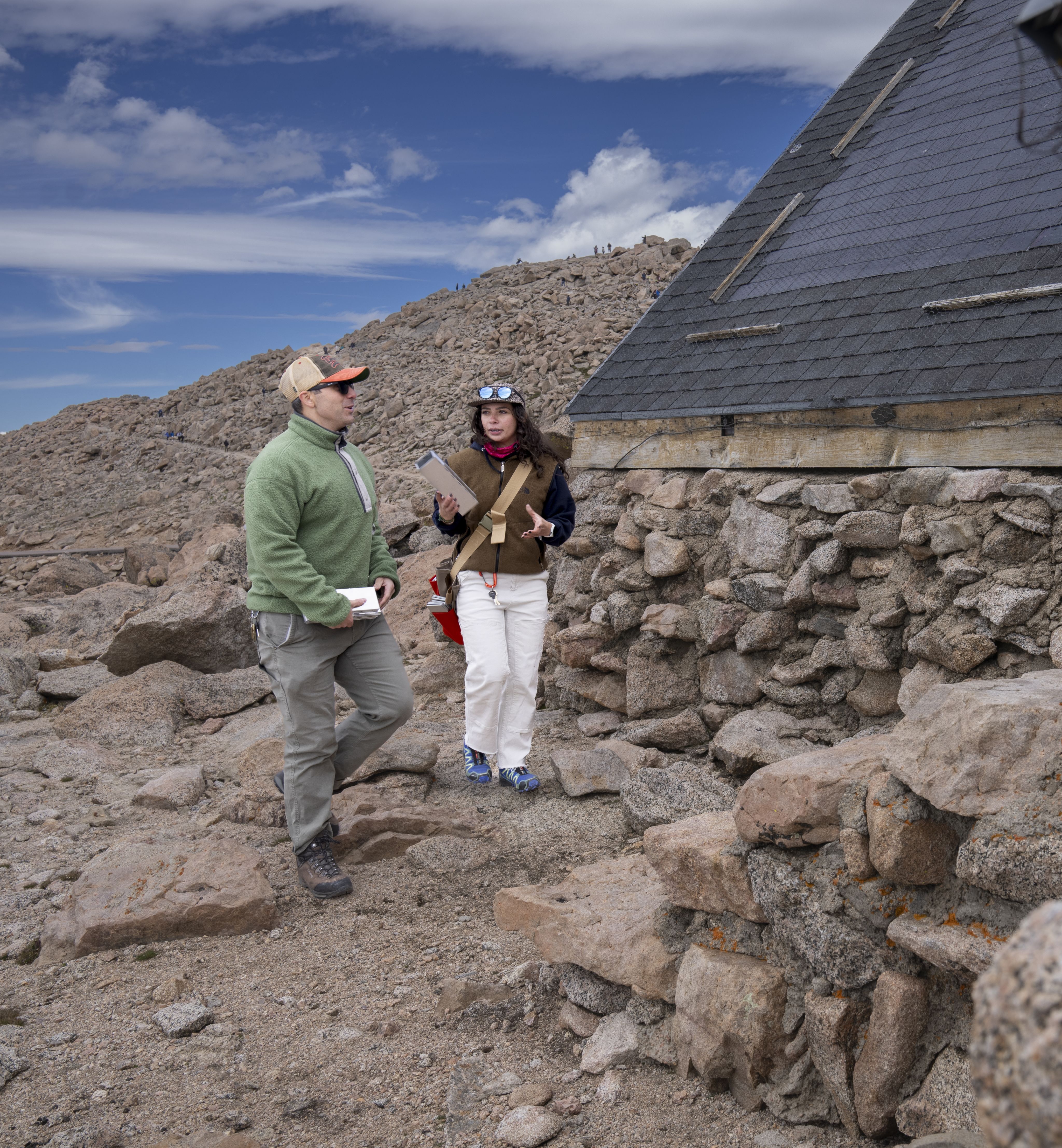
Being high in the sky is hard
If you’ve ever hiked one of Colorado’s fourteeners, you know climbing isn’t just taxing on your muscles—it’s hard on your lungs, too, with less oxygen in your lungs and bloodstream.
“The summit of a fourteener has 60% of [the oxygen] that is available at sea level, so every breath you take, you're only taking in 60% of that oxygen,” Velotta says. “If you drive to the summit of Mount Blue Sky, or if you hike up to it, you're gasping for breath.”
But despite this challenge, deer mice needed to find a place to live where predators were few and far between—like the summits of mountains—so they adapted to operate on less oxygen. Mammals combine oxygen with food to make energy, and less oxygen means less energy. When you’re summiting a fourteener, your body has to work harder; you breathe more heavily, you get dehydrated. And your body makes more red blood cells. When humans have too many red blood cells floating around in their veins, it can lead to some serious problems. For one, it can make blood thick and viscous, like molasses. But it can also do damage in other ways.
“All the blood vessels that carry blood through your lungs start to constrict; they get smaller and tighter, and nobody wants that,” Velotta says. “It causes a lot of problems downstream. It could lead to acute mountain sickness and hypoxic pulmonary edemas, which is basically fluid in your lungs. And it can also lead to chronic disease.”
Humans who live at high altitudes are prone to these problems. Most people who make their homes in the Andes have chronic mountain sickness. The hallmark symptom is polycythemia—thickening of the blood—which can cause pulmonary hypertension and stroke. But here’s the interesting thing about those high-altitude mice Velotta is studying: They don’t have any of those issues.
“They actually breathe slower and deeper, which is a way more effective way of breathing. They have as few red blood cells as anyone would at sea level. They don't get high blood pressure. And we want to know how they do that.”
The highest commute in North America
On a sunny but chilly 54-degree August day, Velotta and his team set out at 7 a.m. for the summit of Mount Blue Sky. It’s the first day of their week-long stay at the base of the mountain near the Echo Lake Campground, where they sleep in dark wooden cabins reminiscent of summer camp.
Their research began the day before at dusk, when the group hopped into a white pickup displaying a DU logo and slowly wound their way along the highest paved roadway in North America. As the sun faded, temperatures dropped and the day’s final tourists and cyclists began to descend, the team got to work setting out hundreds of shiny metal traps. Ten inches long, the rectangular boxes lured the mice as a place to shelter, with a rewarding treat and polyfill—like you’d find inside a stuffed animal—to keep them warm.
The next morning, after making the windy trek back to the weathered A-frame cabin at the summit just a stone’s throw from DU’s historic Meyer-Womble Observatory, the team scrambles across boulders and investigate each of the 320 traps.
“We give it a little shake and take a peek inside to see if [a mouse] is in there,” says Sarah Senese, a first-year PhD student, gently shaking a trap to demonstrate. “And then they get to hang out in there all day while we process them and do all the things that we do to get their data and their blood and take their measurements.”
The trapping and processing of the mice is humane, Senese says.
“We give them all of the carbohydrates and fats that they'll need to stay nice and healthy and fed and happy in the box,” she says. “We feed them apples while we're waiting on experiments because we want them to be in tip-top shape.”
Velotta demonstrates the snap sound the traps make when the mice wander in. It’s not the tasty bird seed inside that the mice are enticed by, he says—it’s the traps themselves.
“[The seed] is bait, technically, but it doesn't really attract them,” Velotta says. “They're attracted to structures, and they'll go in and explore things for food.”
Once the mice are collected, the team heads inside the A-frame and examines them to see if they’ve been caught before. Sometimes it’s valuable to recapture those mice, to fill in gaps in data, and sometimes the team just lets them go. Velotta and his researchers take DNA and blood samples and weigh the mice, too.
“We release them exactly where we found them. We maybe come back down the mountain for a bite to eat, and then we drive all the way back up at dusk, set the traps again, and we do the whole thing over the next day,” Senese says.
While working at 14,000 feet isn’t always easy—“There’s not a lot of oxygen, and sometimes you feel like you didn’t drink enough water,” Senese says—experiencing life at such a high altitude never gets old.
“A sunrise on Mount Blue Sky, you really can't beat,” she says. “It's just the coolest work in the world, in the coolest place.”
The team visits Mt. Blue Sky about twice a year, but the work continues back on campus throughout the year. Hunnicutt, a postdoctoral researcher in the lab, does much of her work in the Seeley G. Mudd building.
“It’s not quite as glamorous as the field research, but we do really important work analyzing all of the data [the team] generates, so that we can really start to see the important patterns that are shaping how these deer mice are living at high altitude,” she says.
As one of the more senior members of the team, Hunnicutt says she prioritizes her role as a mentor.
“A large part of my job is helping to teach these really important skills to the other members of the lab, as well as to the underrepresented minorities and the women in our lab, especially for people who didn't have the opportunity to learn those skills previously,” she says.
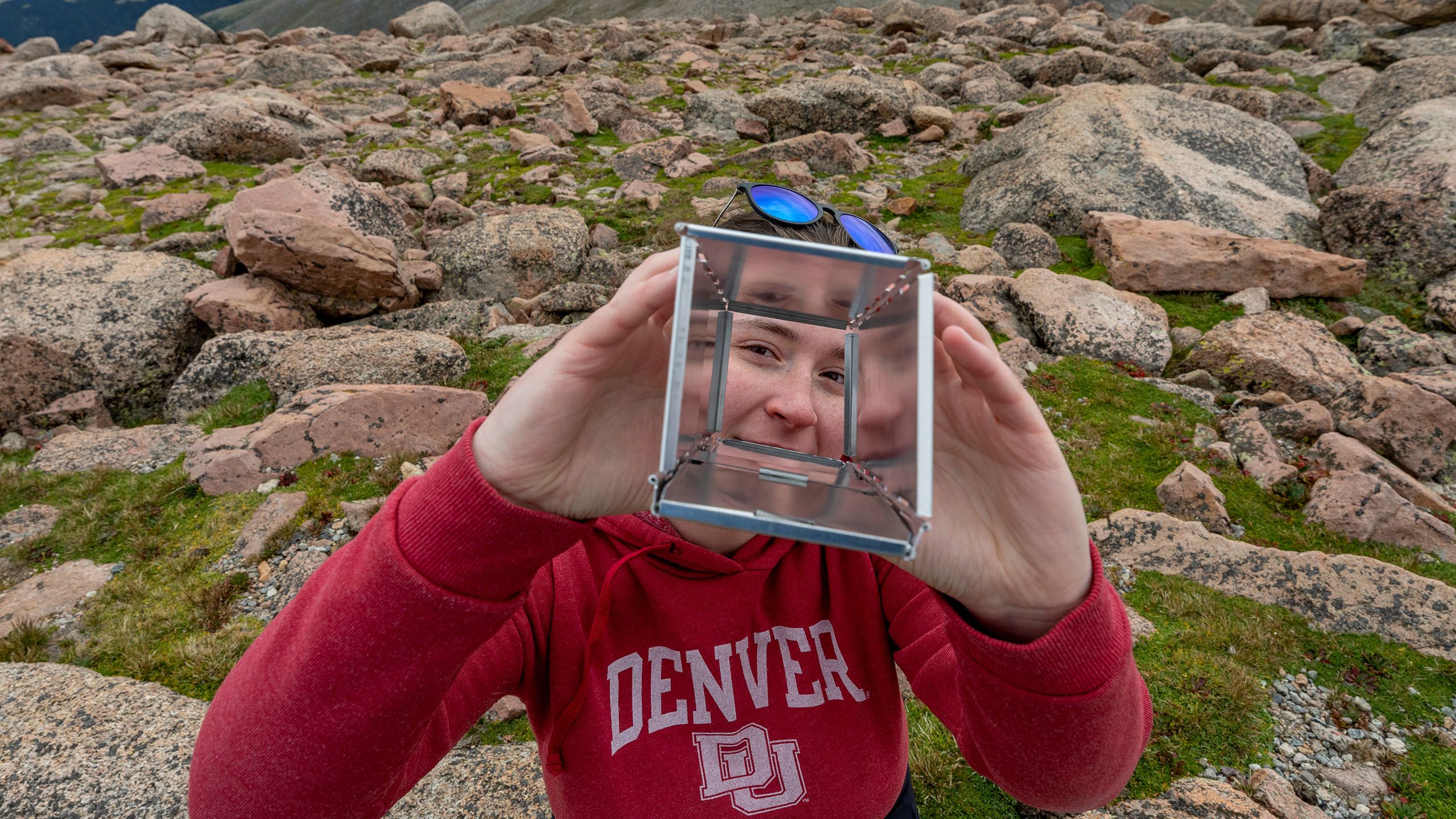
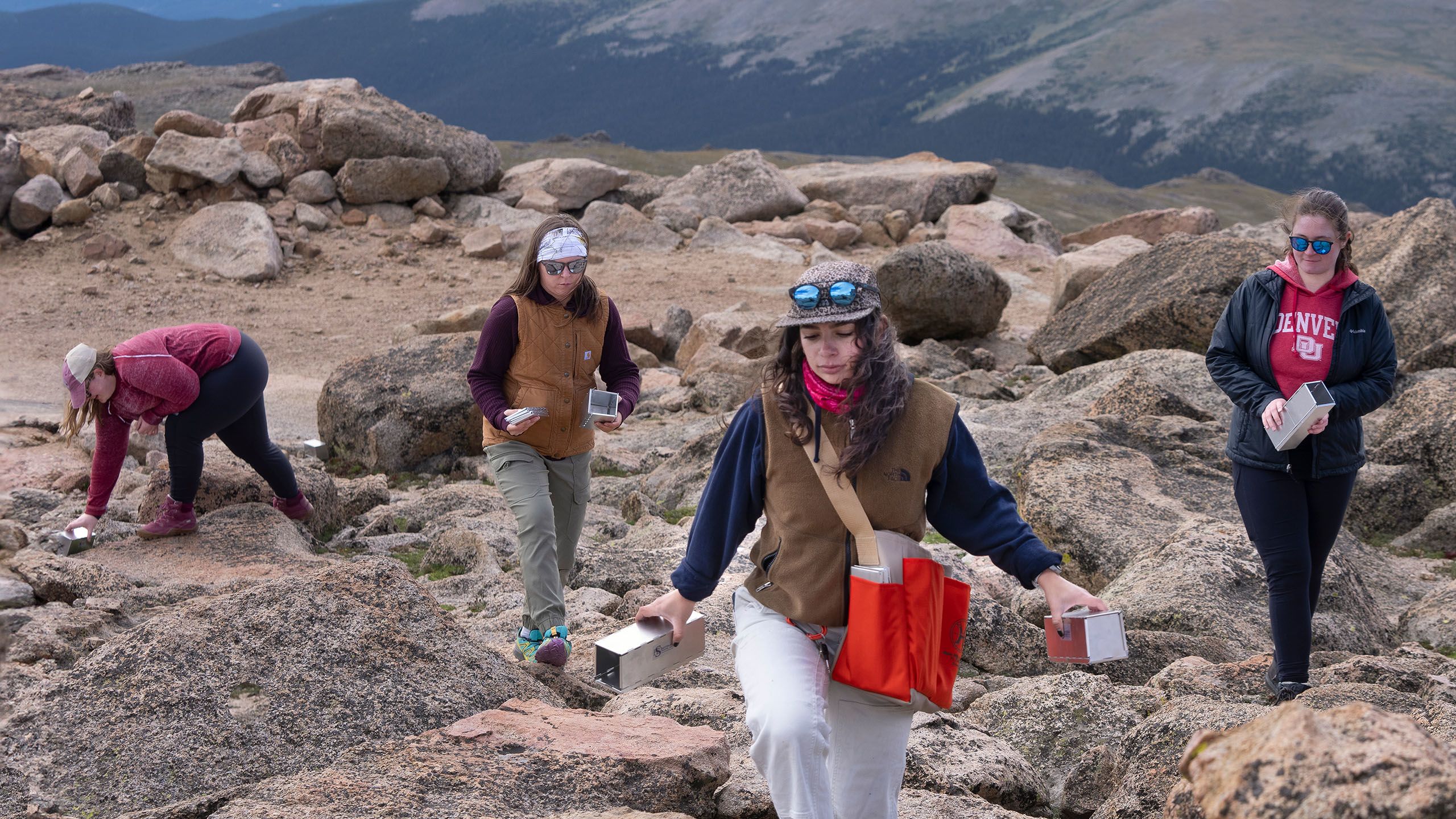
More than just research
The true identity of the Velotta Lab is found in how the team works and plays together. From barbeques and Thanksgiving gatherings to ample time spent together in Colorado’s wilderness with limited connection to the outside world, Velotta has created a tight-knit team.
“Whenever we complete a big experiment, we always do something to celebrate,” Hunnicutt says. “We've gone axe throwing before—Jon is a surprisingly great axe thrower—and we've gone on whiskey tastings in local distilleries in Denver. We just really love hanging out with each other.”
The Velotta Lab is truly like a family, says Senese.
“It’s one of the most supportive academic communities I've been a part of,” she says. “And I wouldn't want to do this work anywhere else but at the University of Denver.”
Next year, the lab will use a new grant to investigate the impacts of climate change on mice and botflies at another field site near Idaho Springs while continuing their fieldwork at Mount Blue Sky. So next time you’re at the top of Mount Blue Sky, where it’s windy and the air is thin, take a break and look around. You might see members of the Velotta Lab—or even a little deer mouse scurrying around, no huffing or puffing in sight.
